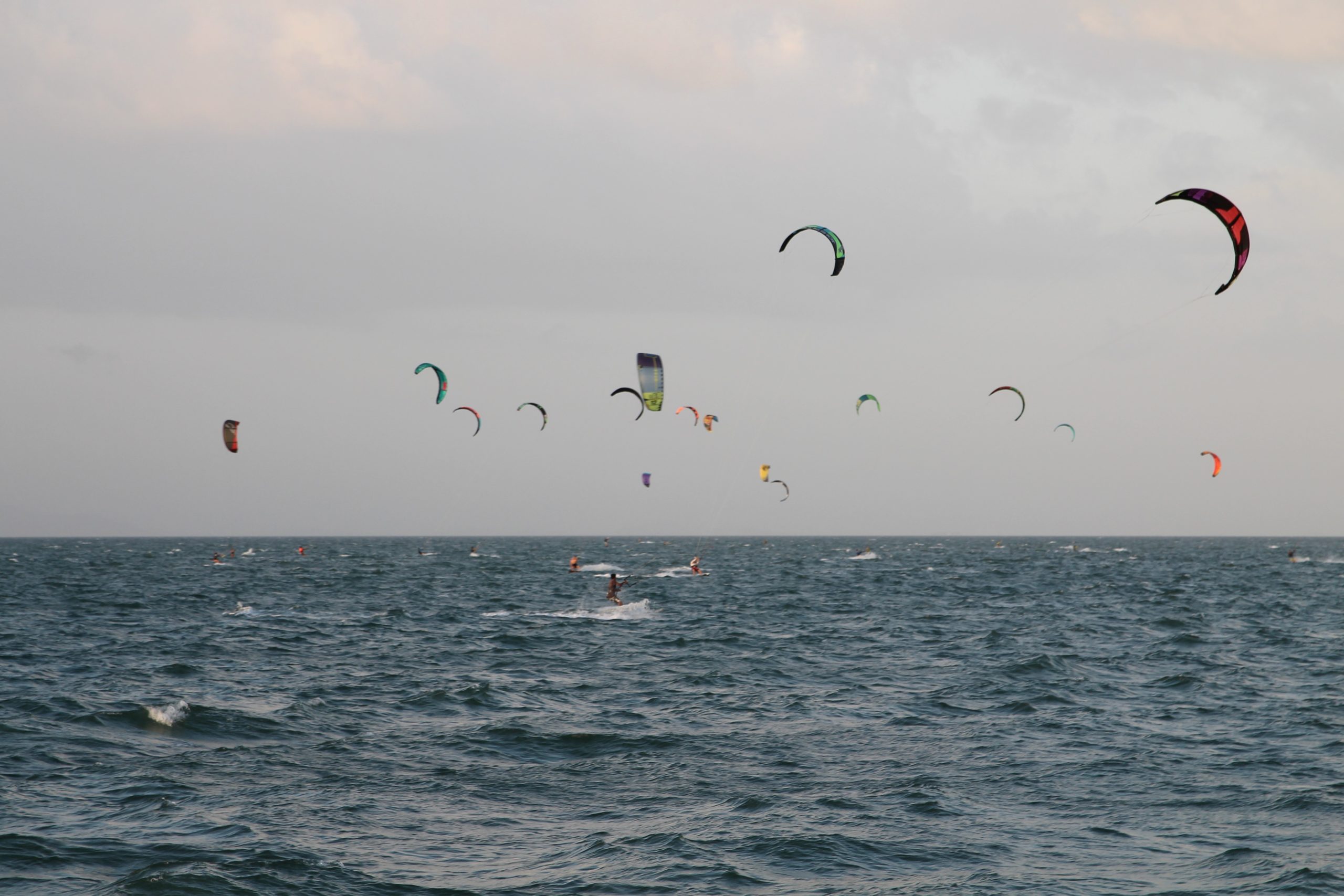
When I began kitesurfing I didn’t know what I should get and when I had saved up enough money I just walked into a kitesurfing shop and said “ I saved 2000 dollars can you give me everything I need to start kitesurfing?” That worked out fine, I got everything I needed and was given some great advice. BUT to help you make some decisions yourself here is what I found out over the years and online.
As a kitesurfer you need a kite, a board, a harness, a safety leash, a pump and probably a wetsuit. You also need the right gear for the right conditions, so with less wind a bigger kite and stronger wind a smaller kite ( also depending on the rider’s weight, board and skill level). If you’ve never kitesurfed before you’ll also need some kitesurf lessons before practicing on your own.
How to Choose Your Kite Gear
The first thing you’ll want to know is which kite you need. When choosing a kite there are many factors that play a role which type and what size you’ll want to choose for your session.
Kite Type
There are several different shapes and designs of kites. Which shape depends on the rider’s discipline of kitesurfing and skill level. Most kites are kites that you pump up and fill the leading edge and strut(s) with air.
The best beginner kites are all round/free ride kites, big air kites or wave kites. They have the greatest wind range, are easy to relaunch and are used to teach within kite schools all around the world.
Kites which you don’t have to pump up are foil kites which are used for light wind days, foil riding and high jumps.
Most kites have 4 lines, but there are also kites with 5 lines such as the C-shape kites ( although there are C-shape kites with 4 lines and other kites with 5 lines) which are very popular with pro-kiters doing freestyle. Most kitesurfers would advise against starting with a C-shape for it’s aggressive power and the ways in which you relaunch the kite are different from the kites with which people teach.
Then there’s the open-C kite for kitesurfers getting into freestyle who do need some slack on their lines at times to start your first unhooked tricks and kiters who want a kite who loops faster.
Kite Size, What Size Kite Do I Need?
Which kite size you need depends on the wind speed, your body weight, your board and your skill level (upwind technique and how overpowered you are comfortable riding).
Wind Speed & Body Weight
What wind speeds do you think you’ll be riding most in? It depends on where you are living, but most of the time it will be around 15-25 knots. Not only the wind speed matters but also how cold or warm the air is, since cold air is more dense. If you are unsure, ask the people at your local kiteshop.
Because most people can’t have 5 kites in different sizes, this is what I would say in most cases:
For a more interactive kite size calculator check out: http://jimbodouglass.blogspot.com/2011/01/interactive-kiteboarding-calculator.html
Board
Your board also plays a great role in what kite you need and what you want to achieve. If you have a bigger board (like the doors that are taught within kitesurfing lessons), you have more buoyancy, and therefore need a slightly smaller kite.
Also, if you’re more advanced and give foiling or wave kiting a try, you’ll also use a kite maybe 2-3 sizes smaller than you usually would take out.
How Many Kites Do I Need?
Some people have three kites or even more for different wind speeds, but I just have one kite because I like different boards for kitesurfing. I have an 8 meter Duotone Neo 2021 and I use it for jumping and old school tricks when the wind is stronger with my twintip, when there is less wind I will use my wave board (Slice F-one) and when there is even less wind I will use my foil with the same board. Since I do longer with boards, than with kites (because the fabric of the kite gets thinner when you use it a lot), I also found this to be the best financially and it is super fun to try all these different disciplines! (Although I would still like a really light wind kite to foil with)
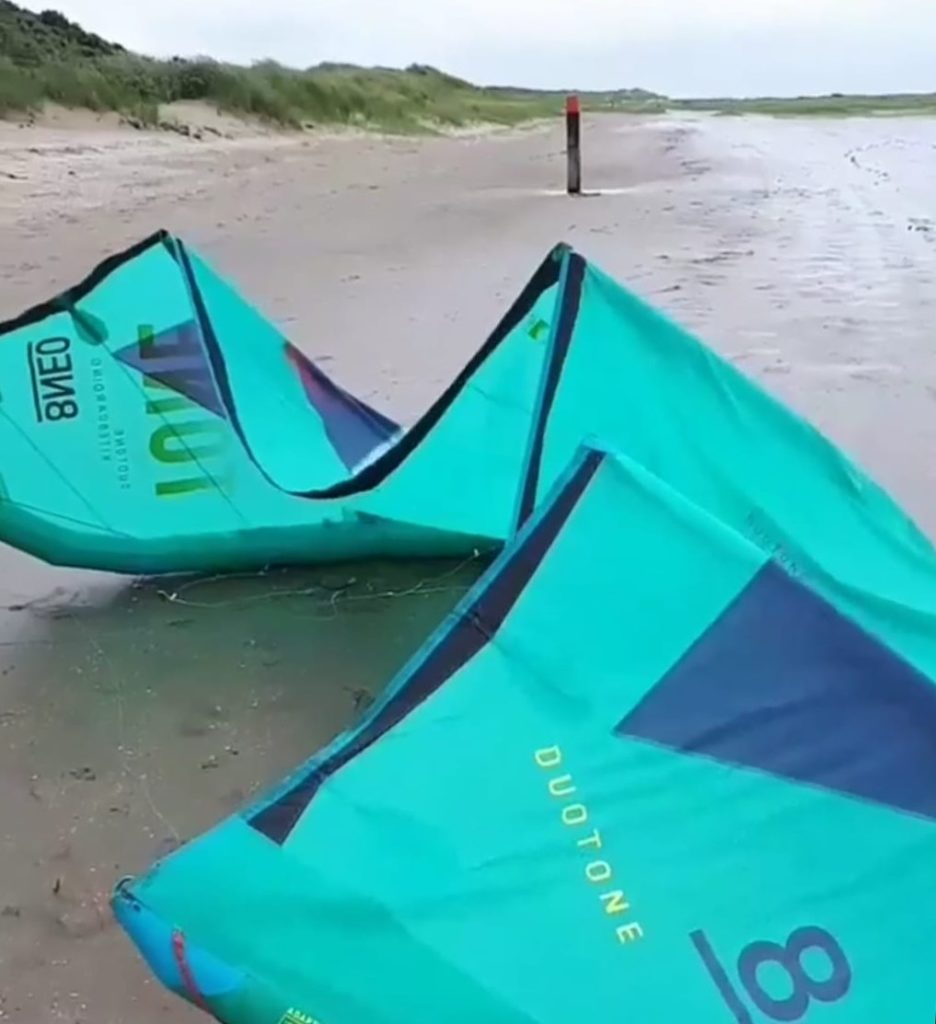
Which Board?
Most people start out on a twintip and maybe stay on a twintip their whole kitesurf life or try out a wave kiteboard or a foil board at some point. Twintips are called twintips because you can ride them both ways, so you don’t need to be able to ride toeside. Twintips are used for freeriding, big air, freestyle, wake and teaching.
How to Choose a Twintip For Kitesurfing
What twintip you should choose depends on the style of riding you want to do and your weight. Twintips can vary in board length, board width, how much rocker they have, the outline and how much flex they have.
What Board Length Do I Need?
The first number on your board is the length which varies from 125 cm – 165 cm. I use a board which is 138 x 42,5 cm (the Naish Stomp 2019) and weight 60 kg and sometimes I use boots (another factor to pick a slightly bigger board).
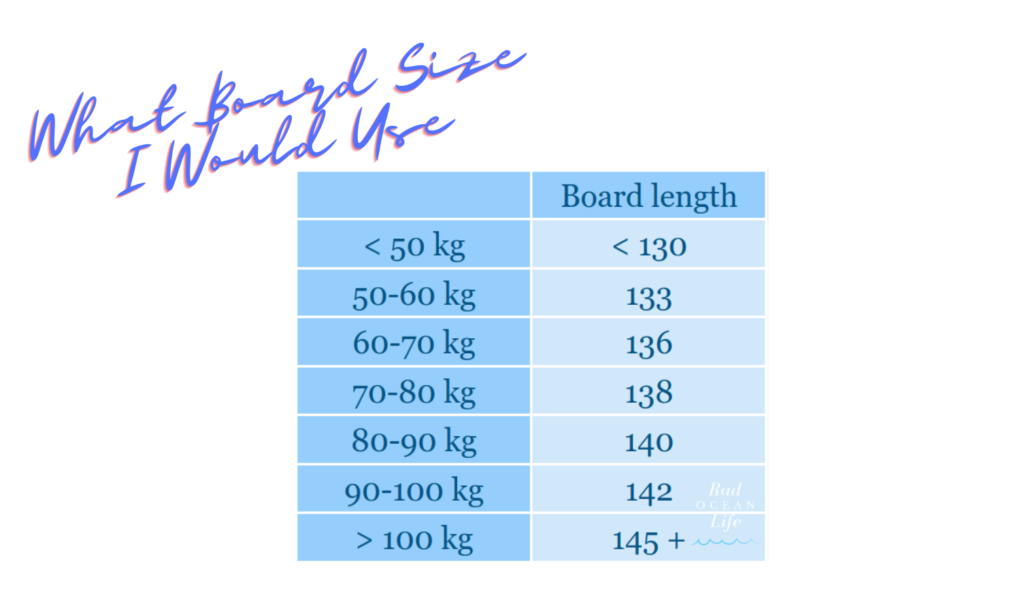
If you are a bigger person you need a bigger board and a lighter person can use a smaller board. To make it easier for yourself if you are just starting out, pick a slightly bigger board than you need. It makes it easier to ride upwind and to ride with less wind.
Board Width
People who are lighter with smaller feet (like women) sometimes prefer a smaller width and smaller stance because it gives them more control over the board.
Rocker or a Flat Board?
The rocker is the amount of curvature a board has from it’s tips to the centre. A flat board has more area on the water and therefore will be performing better in lighter wind and it’s easier to ride upwind, while a board with a lot of rocker has just a relatively small area on the water compared to the actual board size. If you choose a board with more rocker, you’ll also need a slightly bigger board.
A board with more rocker is less suitable for beginners (due to the upwind performance) but it is a blessing for your knees if you advance because it provides softer landings from tricks, so your knees will take less of a hit. Also, a board with more rocker pops is better than one without.
Rounded or Rectangle Outline?
If the outline of the board looks more like a rectangle, the board will have a better upwind performance since a bigger line of the board is in the water.
One with rounded tips is great for freeriding as you can turn smoothly and it is easy and forgiving (better for your knees) to ride in the chop, but it makes it more difficult to ride upwind.
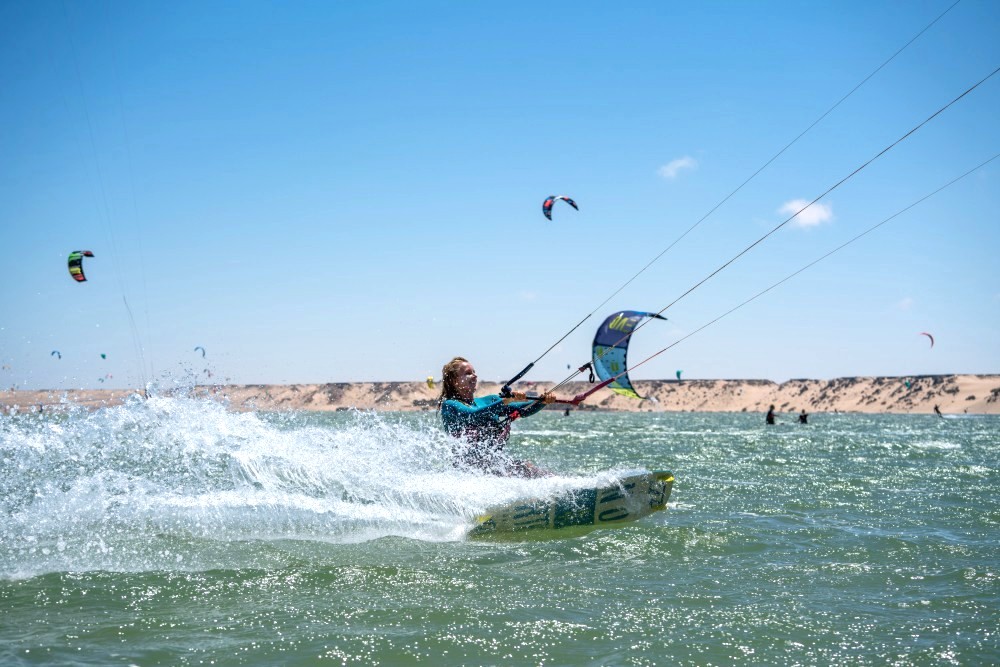
Stiffer or More Flex?
A stiffer board will give you more pop and will make you jump higher, while a board with more flex will absorb more chop and is better for your knees. Stiffer boards are more common in freestyle riding as they give you more load and pop.
How to Choose a Kitesurfing Harness
Seating or Waist Harness?
Whether you should choose a seat harness or a waist one depends on what you find most comfortable, whether you have a bad back and what kite discipline you want to do. For most kite disciplines you’ll want to use a waist harness because it gives you the greatest range of mobility. For race foiling most riders use a seat harness
Should I Choose a Soft Shell or a Hard Shell Harness?
Personally, I swear with a Hard Shell Harness, just because you feel your back being supported so much more. Before I was kiting with an old soft shell harness, and what I have found is that most of those harnesses really lose their shape and support after a few years.
But I also know a lot of people who are just fine with a soft shell, so try it out for yourself!
Does it Fit Well?
That’s the most important question to ask. You don’t want a harness that rides up to your armpits every time you send your kite up. Especially for women designs have been improved much over the years so they won’t rise up that easily. To see whether it fits well first try on the size that you normally would have with clothing. In some shops they have an old bar hanging or something you can hook your harness to so you can lean back and see how it feels while riding.
If not, grab a leash and connect it to your harness and ask someone to hold the leash while you lean back a little and pretend to be riding. If your back is supported in a good way and the harness doesn’t hurt your ribs or is way too loose, it probably fits well.
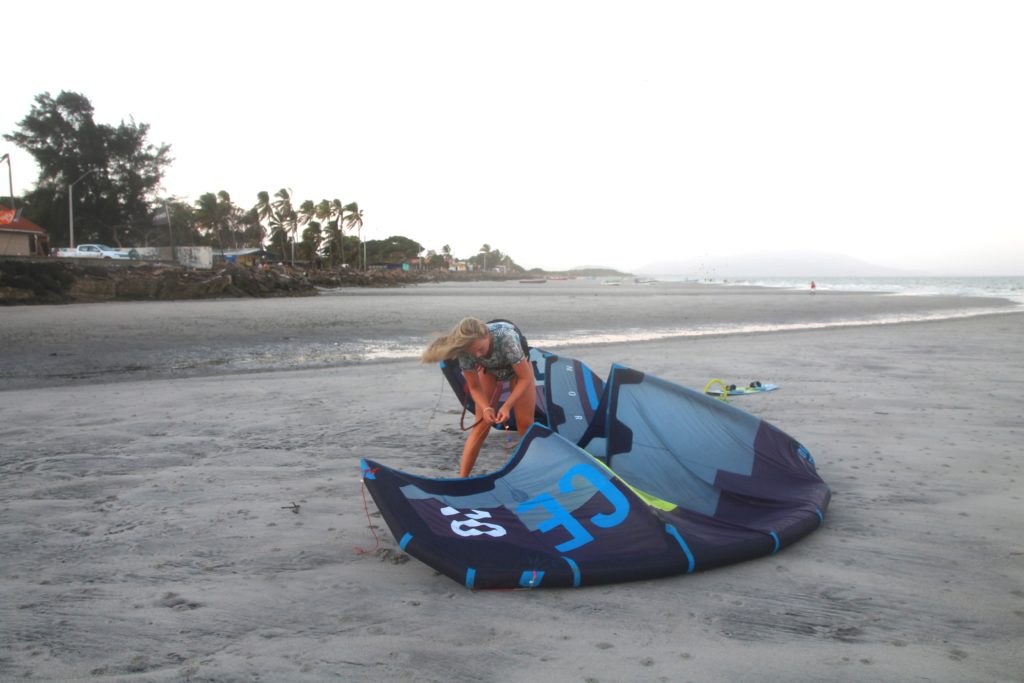
How to Choose Your Kitesurf Leash
Do you need a long or short leash? The only reason to use a long leash that I can think of is for doing unhooked freestyle tricks. If you’re not planning on doing those anytime soon, I would recommend getting a short leash, just because it won’t get in the way or be irritating you between your legs.
I would recommend getting one new, since it is the last part of your safety system and you never know what happened to it if you get it secondhand.
What Pump Should I Get?
The most important thing is that you have a pump which works and one with the right attachment piece for your kite inflate system. There are fancy ones out on the market with which you can pump your kite very fast, but pumping your kite is also a nice warm up before you go kiting ;).
What Wetsuit Should I Get?
It depends on where you live and if you get cold easily. If you live in Panama you could probably kite all season with a bikini or board short or sometimes with a shorty. If you live in the Netherlands however, you will probably need a full wetsuit 4-3 mm or 4-5 mm (there are some occasions where there is wind and the temperature is above 25 degrees Celsius and you can use a shorty then) and for winter you need either a 5-6 mm, or a dry suit, or put on a shorty underneath your 4-5 mm and use caps, shoes and gloves.
So it depends mostly on the temperature of the water and air…
Try to get a fairly new wetsuit, since the quality of material (neoprene) decreases over the years, especially if it’s used in sunny conditions or washed with warm water or when it’s left outside in the sun to dry or when it’s taken off by aggressively pulling on the neoprene a lot.
AND don’t forget your sunscreen when you go out on the water, even if the sky is cloudy.
This was a small overview of what you should get if you want to start kiteboarding. Have fun on the water!
Extra tip: Ask your local kite shop for a good deal, they will often give you a good price if you buy a whole set.
And if you’ve got more questions about which equipment to get let me know! 🙂
